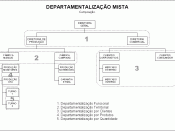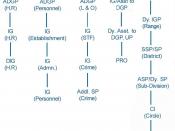Contrary to the more worker friendly environment of Organization B's organic organizational structure, Organization A operates under the efficiency-focused mechanistic structure. Characterized by it's extensive departmentalization, narrow spans of control, high formalization, and limited information network, the mechanist structure is the polar opposite of the organic (flexibility focused) organization. The far less formalized work environment of Organization B make it better equipped to adjust with changes in the fickle consumers of today's ever changing market.
Ideally time will help Organization A will realize the merits of the organization composed of cross-functional and cross-hierarchical teams, wide spans of control, a decentralized work environment, low formalization, and a work environment that encourages the free flow of information and the participation of all employees in decision making. Highly trained and empowered employees would dramatically cut the need for managerial supervision (thereby lowering overhead costs created by paying the salaries of additional employees).
These budget cuts, however, are more than likely to be offset by the added cost of training activities. Such training expenditures should be recognized as a capital investment, for once placed in a cross-hierarchical team based structure, the trained employee can communicate potentially invaluable ideas to upper management, that would go overlooked in an mechanical organization.
Before Organization B can even begin to explore training techniques, it must first conduct an organizational audit that would assess the current relative to the culture that is desired. Any discrepancy uncovered between the two cultures is then used to identify those specific cultural elements the organization needs to specifically change. Once this has been done management must next make it clear to the employees that the organization's survival is contingent upon making the changes outlined by the cultural analysis. The appointment of a new top executive or a management overhaul is likely to...


